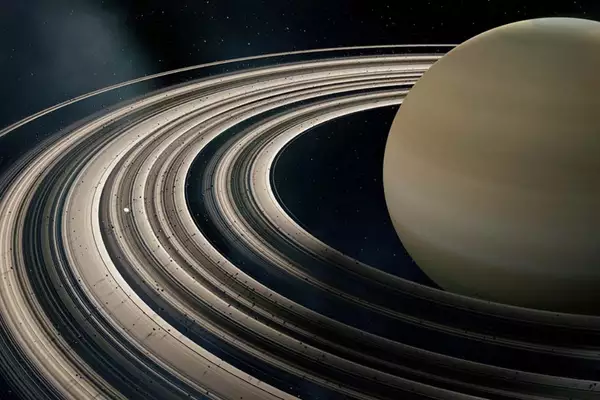Saturn’s rings will ‘disappear’ temporarily in 2025 due to an optical illusion caused by Saturn’s tilt.
- From Earth’s perspective, the rings will appear to vanish because of their incredibly thin structure.
About Saturn’s Ring:
- Saturn’s rings are a system of icy particles, rocks, and dust orbiting the planet. These particles range from smaller than a grain of sand to the size of a mountain.
- The rings are named alphabetically, with the main rings being A, B, and C.
- The rings are thought to have formed from the debris of collided comets, asteroids, and moonlets captured by Saturn’s gravity.
- Saturn’s rings are mostly made of water ice, but they also contain rocky materials.
- Saturn is not the only planet with rings. Jupiter, Uranus, and Neptune also have ring systems, though they are much fainter compared to Saturn’s.
Why Does Earth Not Have Rings?
- Earth’s gravitational forces, including the influence of the Moon, make it difficult for stable rings to form and persist.
- Any rings Earth might have had would likely be disrupted by atmospheric effects and gravitational forces. This prevents the formation of long-lasting ring systems around our planet.
Ref: Source
| UPSC IAS Preparation Resources | |
| Current Affairs Analysis | Topperspedia |
| GS Shots | Simply Explained |
| Daily Flash Cards | Daily Quiz |
Frequently Asked Question:
What are Saturn’s rings made of?
Saturn’s rings are composed of icy particles, rocks, and dust, mostly consisting of water ice.
How big are the particles in Saturn’s rings?
The particles in Saturn’s rings range in size from smaller than a grain of sand to as large as a mountain.
How long have Saturn’s rings existed?
Scientists estimate that Saturn’s rings are relatively young, likely formed in the last 100 million years.
Can Saturn’s rings disappear over time?
Yes, Saturn’s rings are gradually losing material and could disappear over millions of years.



